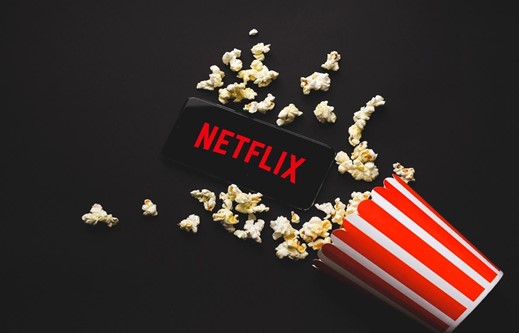Netflix’ takeover of Blockbuster as the go-to video platform for consumers is one of the most popular case studies for business academics.
It was a classic case of David beating Goliath as the later failed to understand the changing economic landscape.
The last two quarters, NFLX has looked more like Blockbuster than a streaming giant as it missed subscriber growth expectations, sending shares spiraling lower. The stock is down 68% since November!
NFLX still has over 200 million subs and remains the top streaming platform. It is not about to fall into obscurity like its old rival. So should we buy it?

The recent developments may lead investors to shun the stock until we see some signs of a turnaround. Analysts panned the results with downgrades and price target cuts coming from J.P. Morgan, Wells Fargo, Stifel, Piper Sandler, UBS, William Blair, and Oppenheimer just to name a few.
Global streaming net adds declined by 200,000. This was the first time in over a decade that NFLX shed subscribers. The figure included a 700,000 decline due to the company stopping services in Russia. Still, even after backing out the Russian numbers, the 500,000 increase fell well short of the 2.5 million it forecast 90 days ago.
The Q2 outlook suggested an acceleration in this trend as it projected a 2 million subscribers decline.
International performance was particularly poor. Canada, Europe, and Latin America saw big declines, Analysts expected to see a boost in subs in all these regions. This shortfall is notable as international is supposed to be a key driver for the company. Asia Pacific was the one area that saw an increase, likely bolstered by strong content offerings from Korea, but that also fell short of analyst expectations. It registered an increase of 1.09 million subs compared to expectations of 1.2 million.
The company laid out four reasons that led to disappointing results. It stated that the underlying addressable market (broadband homes) slowed in pace, account sharing enforcement proved difficult, increased competition from linear TV and macro factors including Russia, inflation and covid impacts. These issues percolated for the past few years but the disruption from covid made it difficult to project.
The news could signal a limit to Netflix’ pricing power. The company steadily increased its pricing point the past couple of years. It did so with limited push back from subs. That changed this quarter as the streaming giant lost one million subs in the U.S.. Retention was slightly lower relative to the forecast, but it noted that this metric remains strong and believes it is among the best in the industry.

High inflation took its toll. Consumers are squeezed at the pump and pretty much everywhere they look. Hard decisions are being made. Proctor & Gambler (PG) reported impressive earnings this quarter, highlighted by a double-digit increase in organic revenue. 5% of that increase was driven by price increases. Consumers need to buy these staples. Streaming on the other hand may be up for debate when buyers deciding which services to cut.
Competition is also heating up. Apple (AAPL), Disney (DIS), HBO Max, etc continue to produce content to compete for the streaming wallet. NFLX has a strong content slate, but they are hardly the only game in town and this is just competition in its space.
The Delta (DAL) report highlighted consumers desire to travel. This demand was verified by credit card data we have seen from the banks as Travel & Entertainment continue to take see a bigger portion of the consumer wallet. After being locked up for two years is it really that surprising that consumers have watched most of the programming on these platforms and are ready for other activities?
There were a few positives in the report. Free Cash Flow was $802 million, well above the expected $559 million. NFLX reiterated expectations that it will be FCF positive in 2022. Q1 Operating Margin was 25.1% compared to street expectations of 22%. NFLX forecast this to slip[ to 21.5% in Q2 which was in line with expectations. It reaffirmed operating margins of 19-20% in 2022.
NFLX reduced its debt by $700 million in the quarter and said it is trending toward reducing debt at the high range of its $10-15 billion guidance.
While the margin and debt performance were encouraging, it did not offset the concerns around the sub decline. Shares of NFLX were taken to the woodshed, falling 35% to its lowest level since January 2018.
Analysts will ponder where sub growth will come from going forward. Questions around the pull forward from covid will be asked. Did the company see a five year pull forward that will cannibalize growth for the foreseeable future? If inflation recedes, will we see consumers add the service back? Does the crackdown on dual entry lead to growth? Can a strong slate of releases in Q2 and 2H22 entice users back? It will take a few quarters to figure out the answers.
These questions on fundamentals come at an important time in the company’s history as it transitions from a growth to value stock. The company will announce changes to its governance at its upcoming analyst day. The strong FCF could allow for a dividend or share repurchase program that would interest investors.
The problem is the company is in no-man’s land as maturation leads to disinterest from growth investors while its valuation at 24x forward earnings is still too expensive to fall on value buy lists. This is a company without a country.
The stock could remain shunned by investors for the coming months as they will want to see signs of a turnaround before getting involved.
There is the potential that the stock slides to a level that investors find to attractive to pass. Do not be surprised to see M&A rumors around the company as it’s market cap slides to a more manageable $158 billion. However, that may even be a rich price tag given some uncertainty.
We must go all the way back to January 2018 on a monthly chart to find a level that could be enticing. That is when the stock broke out above the $200-psyche level. We would want to see shares settle at that level before finding an interest.
Investors should enter any position with extreme caution and follow channel checks as ahead of the Q2 earnings report which will come in late July. One positive would be the idea that expectations are so low following this kitchen sink-style quarter. But buyers will have to deal with a tremendous amount of headwinds going into that report.



